lunedì, dicembre 26, 2022
Almeno per un giorno, lasciamoci cullare da Dickens e dal suo “Canto di Natale”
Insomma, lo abbiamo capito, il Natale deve essere svuotato della sua ricchezza spirituale e deve essere visto – anche per non offendere chi cristiano non è – solo come una sorta di festa della bontà. A Natale si è tutti più buoni, no? In realtà si è solo un po’ più buonisti, e quindi ipocriti. Come celebrare la Bontà vera, dunque? In particolare, se uno – nonostante tutto – proprio non è cristiano. Un modo c’è. C’è un Natale autentico, laico ma non laicista, buono ma non buonista, ed è quello raccontato dal grande Charles Dickens.
Nelle programmazioni televisive ancora si può trovare qualche versione di un vero e proprio mito. C’è solo l’imbarazzo della scelta, poiché sono venti i film e cinquanta gli sceneggiati televisivi tratti dal meraviglioso Canto di Natale di Dickens. Un’opera che nel mondo anglosassone riveste un valore di riferimento archetipico, prima ancora che simbolico.
L’autore del Circolo Pickwick, di Oliver Twist e altri romanzi di grandissimo successo fu una delle voci più significative dell’epoca vittoriana, la voce della coscienza profonda dell’Inghilterra tetra, cinica e industrializzata, che diede espressione ai drammi della gente comune più che alle glorie imperiali. Dickens era figlio di una famiglia povera e schiacciata dai debiti, costretto a lavorare in fabbrica fin da ragazzo per sopravvivere e mantenere la famiglia.
La sensibilità non comune al lacerante dramma della giovinezza violata, e la capacità altrettanto sorprendente di esporre tanto dolore mediante una scrittura snella e talora umoristica, consacrarono già la sua opera prima, Il circolo Pickwick, alla popolarità e al plauso di una società non meno schiacciata dal lavoro e dalla povertà.
Dickens realizzò, col Canto di Natale, un’opera piena di umanità e magia buona, che ne fa un piccolo capolavoro insuperato nel suo genere, un racconto scritto nell’inverno del 1843, con l’urgenza di inviare “qualcosa” all’editore, con poco tempo a disposizione, per poter trascorrere un Natale decente. Ne nacque un libro che scosse profondamente i lettori dell’Inghilterra industrializzata, impegnata a produrre con la maggior velocità possibile e che non aveva più il tempo né la voglia di entusiasmarsi per una festività, quella del 25 dicembre, che non era in fondo niente più che un momento importante del tempo liturgico cattolico, nonché un giorno di sospensione per la catena di produzione.
Il Canto di Natale non è, come erroneamente molti pensano, un raccontino natalizio sentimentale e buonista, ma un’opera semplice e dotta allo stesso tempo, ricca di spunti e riferimenti, tratti tanto dalla Bibbia, quanto dall’Amleto, passando per la Divina Commedia.
Dickens in questo racconto inventò anche un’espressione destinata a diventare tradizionale: “Buon Natale”. Egli fu il primo ad accostare l’aggettivo “buono” alla parola “Natale” e di conseguenza è anche colui al quale il mondo deve l’augurio più famoso dell’anno.
Ma il Canto va ben al di là di un raccontino a lieto fine per divenire una parabola, un elogio e una sorta di vero e proprio manifesto programmatico del prendersi cura. Un racconto che diventa un viaggio quasi dantesco alla scoperta, o meglio alla riscoperta, del valore del tempo e dello spazio dedicato a se stessi e agli altri, mediante il viaggio, simbolico ed esemplare, di Ebenezer Scrooge, attraverso una serie di incontri visionari che ricordano, oltre al viaggio di Dante con la guida di Virgilio, anche l’incontro tra Amleto e lo spettro del padre. Analogamente a Shakespeare, Dickens, ovunque ma qui con molta più evidenza, fonde la visione con la realtà quotidiana e mescola, come il maestro, il registro tragico a quello fiabesco e a quello comico.
Non per niente tra le tante versioni cinematografiche del racconto quella che è forse la più bella è Canto di Natale di Topolino, realizzato nel 1983 dalla Disney, cartoni animati non digitali, magnifica fiaba natalizia, con protagonista uno straordinario Paperone (e d’altra parte Scrooge Mc Duck è il nome originario dato dagli autori Disney al papero avaro), in una rappresentazione davvero fedele a Dickens. Si potrebbe anzi dire che il cartone animato è il genere cinematografico più spirituale, fantasmatico, visto che può fare a meno anche della presenza corporea degli attori. Ed è sempre stato in grado di generare stupore, che è esattamente quello che voleva suscitare nei lettori Dickens. Canto di Natale è un itinerario fantastico alla riscoperta del significato della propria esistenza.
Il ricco avaro e misantropo Ebenezer Scrooge, nella sua Londra bancaria e usuraia, in un mondo borghese, dove ciò che conta sono solo gli affari e il profitto, per una notte lascia la sua City: gli viene offerta la possibilità di un viaggio, una straordinaria e terribile avventura: un itinerario nel proprio passato, prima, e poi nel proprio futuro, e quindi nel presente che sarà infine rigenerato. C’è un po’ di horror, di gotico, in questa storia, che si trasfigura poi nella dimensione del fiabesco, della fiaba buona. Scrooge l’avaro, l’anaffettivo insensibile al dolore degli altri, viene trasformato, e salvato.
È dunque una fiaba laica, perché non c’è Cristo, non c’è la Natività, la Sacra Famiglia, ma è un racconto esemplare di una nascita, anzi, di una rinascita. La storia di una salvezza. Ancora Chesterton diceva: “La più enorme e originale delle idee alla base dell’Incarnazione è che una buona volontà s’incarni; che venga, cioè, messa in un corpo. Un regalo di Dio che può essere visto e toccato: se l’epigramma del credo cristiano ha un punto essenziale è questo. Lo stesso Cristo è stato un regalo di Natale.”
Dickens ci offre dunque una fiaba che è una stupenda allegoria del Natale, della venuta del Salvatore come dono. Una allegoria che è molto meglio di tutti i tentativi di manipolazione ideologica, che il grande Chesterton aveva profeticamente previsto: “la moderna teologia proverà a convincerci che il Bambino di Betlemme è solo un’astrazione che rappresenta la totalità dei bambini, e la Madre di Nazareth solo un simbolo metafisico della maternità. La verità è un’altra: la narrazione della Natività ha un valore pienamente universale proprio perché riguarda una sola madre e un solo figlio, singoli e concreti. Infatti, se Betlemme non fosse particolare, non sarebbe popolare”. Sotto l’albero, la notte di Natale, rileggiamoci ancora una volta il Canto di Dickens.
Paolo Gulisano
sabato, dicembre 17, 2022
The Synod in Ireland
venerdì, dicembre 16, 2022
Government recognising commercial surrogacy in all but name

Once drafted, the new provisions will be part of the Assisted Human Reproduction (AHR) Bill, presented in March and currently still at Committee Stage in the Dáil. Crucially, the law will allow a surrogate mother to be paid “reasonable expenses”. This includes a payment for earnings foregone, which is a fee in all but name. If a woman makes a living by being a surrogate, that makes it a commercial enterprise, especially when you add in other fees including those paid to the facilitating agency.
Notably, the law will not allow agencies in Ireland to be paid a fee, but will allow it overseas. This sort of payment falls under the definition of “commercial surrogacy”, according to the AHR Bill. (section 54) How is that not a huge double standard?
The new legislation will also recognise past surrogacy arrangements, applying criteria that are less demanding compared to those required for future contracts.
The Canadian bioethicist, Winifred Badaiki, writes: “Surrogates in Georgia are typically low-income earners, and the intending parents are often middle-class foreigners. The Georgian surrogacy industry has taken advantage of this dynamic to build a thriving industry rife with exploitation. The victims, unfortunately, are the gestational carriers. For some women, in the absence of other options to break free from precarious situations, becoming gestational carriers appears to be their best option at escaping poverty, even if only for a short period”. It is the same in Ukraine and elsewhere.
The AHR Bill‘s list of “reasonable expenses” (section 55) includes any loss of income for a period of up to twelve months due to being unable to work; expenses for accommodation and travelling, for payment of childcare and housework undertaken by other persons; payments for legal advice, counselling, and more.
Such “reasonable expenses” would be a substantial source of income for less wealthy women. What the Bill calls “altruistic surrogacy” can easily be a commercial arrangement in disguise. This is even truer for women living in poor countries, where the Irish state has no means to set and attest standards.
Ireland will become the only country in the world with specific legislation for citizens engaging in surrogacy in other jurisdictions. Currently, there is no international framework to rely on, as for international adoptions for instance, and it is extremely complicated to control standards and regulations abroad. When legal difficulties for the parental recognition of babies born from surrogacy arrangements abroad arise, they are addressed according to the domestic family law, generally through some form of adoption. Ireland will be unique in facilitating with specific legislation such arrangements abroad.
This year, the Norwegian Minister for Children and Families compared this practice to human trafficking and proposed to make foreign surrogacy a criminal offence, as it is the case for the domestic one.
The Italian Prime Minister has also promised to legislate in the same direction.
mercoledì, dicembre 07, 2022
Canada slides right down the assisted suicide slippery slope

Canada only introduced assisted suicide in 2016, but already we see that the grounds to avail of it are widening and the country now has one of the most permissive euthanasia and assisted suicide laws in the world. Increasingly, assisted suicide is being seen an alternative to a lack of proper health care or welfare resources. There are even ritual and ceremonies being developed to accompany the produce which both glamourises and normalises it.
Last year, the total number of deaths by ‘medical-assistance-in-dying (MAiD)’ at 10,064. Forty-four percent took place in private residences and 29pc in hospitals. From 2016 to 2021, 31,664 Canadians have been killed in this way.
Is this always by a genuine free choice or, instead, is it taking place because vulnerable patients feel under pressure and believe they have no real alternative, such as palliative care?
Unlike other countries where it is prohibited, in Canada doctors are allowed to offer euthanasia to their patients. This is causing serious concerns. Campaigners for vulnerable patients have highlighted that illness often raises suicidality but these thoughts tend to disappear when proper treatment and care is offered. Suggesting MAiD as one of the possible options makes death an attractive and even expected choice for vulnerable or elderly patients.
“No other country in the world has normalised assisted suicide or euthanasia in this way as a potential first-line therapeutic option to address suffering”, said a group of Canadian doctors in the World Medical Journal recently.
MAiD is becoming an easy solution to compensate the lack of proper care or adequate resources.
We are already seeing cases of desperate people applying for assisted suicide as alternative to being homeless, or because they couldn’t find housing to accommodate their disability.
Last week, a paraplegic army veteran told the Canadian Parliament that when she complained about the lack of a stairlift at her home, she was told: “If you are so desperate, madam, we can offer you MAiD”.
The head of the Human Rights Commission has commented: “Medical Assistance in Dying cannot be a default for Canada’s failure to fulfil its human rights obligations.”
The Canadian experience shows how quickly culture can deteriorate so that what was once taboo is now presented to the public as something that is perfectly understandable and even to be celebrated.
Here are two examples of the process of celebrating assisted suicide. A major fashion retailer has just released a video glamourising the assisted suicide of a 37-year old woman.
Another example is a Christian church in Winnipeg that offers assisted suicide ceremonies to its members. The rituals are hold in the sanctuary. Life, once sacred for Christians, is now terminated with the blessing of a cleric.
Canada shows that the slippery slope is real. When death is offered as a tool to relieve suffering, there are no logical reasons to limit it only to certain groups. Safeguards and limits are lifted once assisted suicide is normalised.
—
Photo by Diana Polekhina on Unsplash
lunedì, novembre 28, 2022
New report highlights worsening persecution of Christians
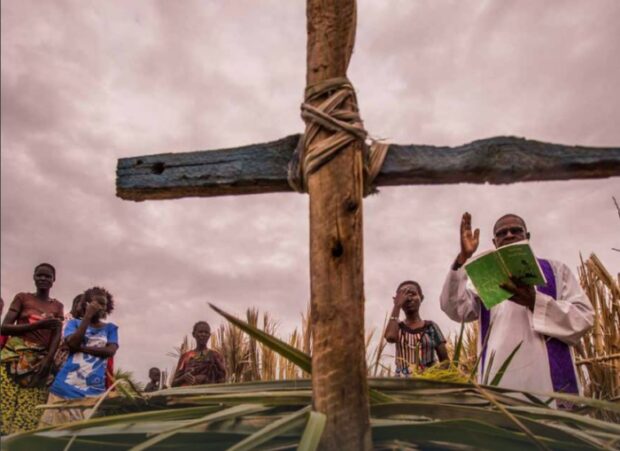
Numerically speaking, Christians are the most persecuted religious group in the world and a new report by Aid to the Church in Need (ACN), says things are getting worse.
The document, titled “Persecuted and Forgotten? A Report on Christians oppressed for their Faith 2020–22”, was presented last week on Red Wednesday, the annual day when ACN raises awareness of the plight of persecuted Christians.
The persecution comes in two forms. One is inflicted by Governments, and another is by local communities or organisations. Attacks vary from legal, to physical, to outright murder.
In almost all of the countries surveyed, levels of oppression have increased in the two years since the last report. Part of the problem, according to the ACN document, is a “cultural misperception in the West that continues to deny that Christians remain the most widely persecuted faith group.” Religious discrimination, which is widespread in many countries, is generally ignored.
For instance, Qatar is currently hosting the football World Cup and we have heard much criticism of their lack respect for women or minorities. But almost nothing is heard about the lack of religious freedom in that country.
The ACN report says: “Despite improvements, including removing some anti-Christian references in school text-books, there has been a sharp rise in reports of intolerance.”
Turning to Saudi Arabia, another country that has strong business connections with the Western world, it says, there are “ongoing bans on Christian places of worship and public display of crosses, Bibles, etc.”
Nigeria, the largest country in Africa, “teeters on the brink of becoming a failed state, with kidnappings, priests killed and deadly attacks on churches becoming increasingly regular”, says the report. This is due particularly to the presence of Jihadism in the region. Between January 2021 and June 2022, more than 7,600 Christians were killed in Nigeria.
If in Africa, oppression comes mostly from militant groups, often inspired by the jihadist ideology, in Asia it is often the State that restrains the freedom of Christians.
“In varying degrees, from tightening constraints in Vietnam to an almost total ban in North Korea, State authoritarianism restricts – or even strangulates – believers’ ability to worship freely in Asia”, the report comments.
Cardinal Zen’s arrest in Hong Kong is presented as a significant case. He was involved in an organisation that helps pro-democracy protesters. For this, the Cardinal has been unjustly accused of ‘colluding’ with foreign forces and threatening China’s national security. “In China and North Korea, totalitarian governments crush the faithful underfoot, monitoring their every move”, the document notes.
Christians are harassed in more countries that any other faith group. In the period covered by the report, October 2020 – September 2022, the situation has worsened in the 24 countries under scrutiny.
In the Middle East, the situation in territories that were under Daesh (ISIS) occupation has not improved since they were liberated. Iran is the only one of the seven Middle East countries reviewed that has seen some improvement.
ACN is active in Iraq with a comprehensive post-Daesh stabilisation programme that involves the rebuilding of Christian towns and villages, homes, schools, churches and other public facilities.
This is only one example of the many activities promoted by Aid to the Church in Need in support of Christians. They are present in 140 countries, particularly where believers are persecuted or oppressed. The Irish branch of ACN can be accessed here: https://www.acnireland.org
giovedì, novembre 24, 2022
An Ireland without Down Syndrome

The Master of the Rotunda, Professor Fergal Malone, has revealed that up to 95pc of parents who are informed by the hospital that their unborn babies have Down Syndrome (DS) opt for abortion. This is a horrifying figure that appears to have soared since the abortion referendum even though the terminations in these instances are performed mostly in England.
What is happening is, of course, a modern-day version of eugenics. We are creating an Ireland without Down Syndrome and it is provoking almost no debate or reaction.
Professor Malone mentioned the figure of 95pc to the Irish Independent last week, but in the run-up to the 2018 referendum, he told RTE’s Liveline that the figure was 56pc. This is a massive increase in a short period.
Rather than being shocked at what is happening, pro-choice activists want the abortion law changed so that unborn babies with non-fatal abnormalities can be aborted for that reason specifically.
These figures refer to the Rotunda, one of the biggest maternity hospitals in the country, where Malone is the Master, but there are no reasons to suppose rates being substantially different in other hospitals. We don’t know for sure if a similar percentage of parents from other maternity hospitals abort these babies, but it would not be at all surprising if it was also very high. The latest figure for England is 88pc.
In 2018, Dr Rhona Mahony, who was then Master of the National Maternity Hospital on Holles Street, was asked whether there would be an increase in abortions of babies with Down Syndrome if the 8th amendment was repealed. She didn’t give a clear answer, but she said that in her hospital at the time about half of the women told their unborn baby had DS opted to go to England for a termination.
When, during the campaign to save the 8th amendment, the pro-life side highlighted the fact that in countries with liberal abortion laws a very high percentage of babies with DS are aborted, we were accused of using these children for political purposes.
Prominent pro-repeal advocates were in denial.
Simon Harris, who was then the Minister for Health, said: “I do not believe women in this country adopt that approach when they have a diagnosis of a child with a disability. … I think it is somewhat offensive to suggest women in Ireland are seeking abortions for that reason.”
Irish Times columnist, Fintan O’Toole, wrote: “It is not true that the increase in screening has wiped out the births of DS children. … Admittedly access to screening in Ireland is problematic, but even so the numbers of Irish women taking this option is strikingly small.”
He was wrong then, as I explained in this blog, and even more nowadays, as the figures from prof. Malone prove.
What has increased since the referendum is not only the percentage of DS diagnoses ending in terminations but obviously their absolute number as well. This is driven in part by the fact that it has become easier to detect chromosomal or genetic anomalies through earlier prenatal testing.
In the UK, the number of babies born with Down Syndrome has fallen by 30pc in NHS hospitals that have introduced early screening.
Prenatal tests are becoming more common and affordable. Their number in Holles Street maternity hospital went from 1,005 in 2012 to 2,515 in 2021.
Irish women still go to England when they want to abort a baby with a non-fatal abnormality, unless it detected before 12 weeks, when abortions can take place for any reason.
We don’t have absolute figures of abortions for non-fatal disabilities in Ireland, but Irish women generally go abroad because this kind of termination is permitted here only before the 12-week limit and most of diagnoses of foetal abnormality happen afterwards.
In 2021, 59 Irish babies with Down Syndrome were aborted in England, 24 more than the year before (35). This number continues to grow, as predicted by the prolife activists who were accused of scaremongering. The figures were 27 in 2019 and 17 in 2018.
Would Down Syndrome Ireland and other similar organisations have anything to say?
The current law in Ireland allows abortions at any gestational age when the baby has a condition that could cause its death within 28 days from birth, or earlier. Before 12 weeks, abortion is allowed for any reason.
Dr Aoife Mullally, who leads the HSE’s abortion services, wants a relaxation of the law and allow abortion for not life-threatening disabilities after 12 weeks. This is eugenics for disabled babies. It is not clear if she would accept any time limits.
Prof. Malone supports such relaxation but acknowledges that this can only happen by legislating for abortion on grounds of disability. He believes that if this was proposed before the 2018 referendum, as per the recommendation of the Citizens’ Assembly, the vote in favour of repeal would not have been so high.
Liberals will always ask for more relaxations. For them, abortion for disabilities is not a taboo anymore. They might not like the word, but this is pure eugenics, the selection of the fittest.
venerdì, novembre 18, 2022
How Covid curbs on church-going harmed public health

During the Covid-19 pandemic, people were barred in many countries from attending religious worship for long periods, and nowhere more so than in Ireland. When they were not barred, severe restrictions were put on the numbers who could attend. But strictly from a public health perspective, was it worth it? An important new study suggest it was not, and the restrictions may have done more public health harm than good.
The research, just published in the European Economic Review is based on a nationally representative sample of over 100,000 responses from 52,459 individuals in the United States. It was carried out during the period from March 2020 to May 2021, when most American States limited the number who could attend a house of worship.
A crucial finding of the study is that the severe restrictions on religious worship do not seem to have slowed the spread of the virus.
It says: “there is no statistically or economically significant association between restrictions on houses of worship and either COVID-19 infections or deaths regardless of how restrictions are measured”. (p. 12)
The article concludes that “there is almost no evidence that the restrictions had a positive effect on public health, consistent with a growing body of evidence that has evaluated the launch of State quarantine policies.” (p. 12)
But the restrictions or ban on public worship did harm the mental health of some worshippers.
The author focuses on two variables: current life satisfaction and self-isolation.
The study confirmed that religious people have higher level of current life satisfaction overall, compared to the rest of the population. This is partly achieved by being part of a religious community. Therefore, it is no surprise that is also found a “strong negative association between state restrictions and current life satisfaction, particularly for religious adherents.” (p. 6).
If one of the main sources of their wellbeing was removed, how could it be otherwise?
The author notes that going to a church, or attending any other religious venue, offers people the opportunity to forge relationships and grow stronger in their faith. The survey established that the restrictions had “a disproportionate impact on self-isolation among religious adherents.” (p. 7)
Self-isolation among religious people increased by more than among their non-religious counterparts. This is one of the reasons why their well-being suffered more as a result of the pandemic.
The decline in well-being was stronger in Catholic than in Protestant congregations, and non-existent among Mormons, who are concentrated in Utah where no significant restrictions were put into place.
The main result of the study is that “religious adherents experienced systematically lower levels of well-being and isolation following the adoption of such restrictions.” (p. 11)
The study focuses on the United States only. It would be interesting to see such research extended to other countries, particularly to Ireland that had the longest period of worship restrictions in Europe.
sabato, novembre 12, 2022
venerdì, novembre 11, 2022
Extreme pro-abortion measures passed in three US states

The US midterm elections took place on Tuesday. What has attracted little attention on this side of the Atlantic is the fact that voters in three US states backed extreme, pro-choice amendments to their constitutions. Pro-life proposals went before two other states, and they were rejected. Perhaps part of the reason is that the Democrats spent half a billion dollars on pro-abortion ads, a truly stunning amount.
The US Supreme Court overturned Roe vs Wade last summer in a ruling called Dobbs vs Jackson. The Roe vs Wade ruling in 1973 imposed a liberal abortion-law nationwide. The Dobbs decision handed the power to decide abortion laws back to the individual states, through legislation, court rulings, or ballots initiatives.
The Democrats are now pushing for laws which go even further than Roe vs Wade.
In California they put a constitutional amendment before voters that allows abortion up to birth, without exceptions, even for minors. Sixty-five percent voted in favour. The current law already allowed abortion for any reason before viability but now access to terminations is explicitly protected in the state constitution.
Seventy-seven percent of voters in Vermont approved a constitutional change that recognises a “right to personal reproductive autonomy”. Among other things, this will exclude parental involvement when minors seek an abortion.
While the results in ultra-liberal California and Vermont were not surprising, the vote in more middle-of-the-road Michigan was a particular disappointment for the pro-life side.
Fifty-seven percent of Michigan voters opted to recognise an unlimited right to abortion, including for minors. The amendment has wide consequences, such as repealing the state’s ban on tax-funded abortions and removing parental consent not only for abortion but also for contraception and sterilisation. This radical change goes beyond the Roe v Wade abortion rights regime.
Kentucky rejected by a small margin (52pc vs 48pc) a pro-life amendment that would have declared: “nothing in this Constitution shall be construed to secure or protect a right to abortion or require the funding of abortion.”
The consequences of this vote are not as radical as the referendums in California or Michigan, because there is still no positive right to abortion in the Kentucky constitution and its regulation is a matter for the state General Assembly. The current law is quite restrictive as it allows abortion only when necessary to prevent possible death or risk or permanent injury to the mother. If passed, the amendment would have put an end to legal challenges to overturn the law in courts.
Montana rejected a law requiring health care providers to make reasonable efforts to save the life of a baby born alive after an abortion. A total of 52.6pc voted against the proposal. Unlike the other ballot initiatives, this law did not set limits to abortion and, in theory, could have been supported even by people with pro-choice views. Still, it was rejected.
AdImpact, an ad-tracking firm, has estimated that the Democrats have spent nearly half a billion dollars on ads mentioning abortion. Adimpact also found that abortion was mentioned in 654 ads of 3,295 total commercials run in races for governor, Senate and House. Inflation was mentioned in 575 of those total ads.
Not everything went badly on Tuesday from a pro-life point of view. In spite of the gigantic sums spent, abortion activists did poorly at state level.
In states that have enforced abortion limits since Roe vs Wade was overturned, no pro-choice governor or attorney general was elected.
Pro-life Governors were re-elected in four states with early gestational prohibitions (Georgia, Iowa, Ohio and Tennessee).
Governors that have signed moderately pro-life laws have been re-elected with significant margins also in Florida and Texas, where they were running against well-funded candidates.
In Nebraska, the pro-life side now has a strong majority in the state legislature, and they can easily pass legislation to protect unborn children.
In Ohio, pro-lifers have won three Supreme Court seats, giving them a majority in the court which bodes well for pro-life laws there.
mercoledì, novembre 09, 2022
Sagesse greche et paradoxe chretien
«Il cristianesimo si è unito con l’ellenismo, con una, cioè, delle forme più perfette di umanesimo, in un indissolubile vincolo. All’ellenismo esso deve, in gran parte, il suo trionfo nel mondo antico. È impossibile capire taluni aspetti del dogma senza ricorrere ai concetti greco-romani, che hanno contribuito ad elaborarli. Questa unione del mondo cristiano e del mondo antico ha salvato la civiltà durante il Medio-Evo. Il cristianesimo non ha soppresso ciò che l’umanità aveva creato di più grande prima di esso, bensì l’ha battezzato. In esso, i valori umani prima vengono convertiti, poi coronati: stanno a segnare la via sacra per il “Trionfo” dell’“eroe antico” più perfetto, il Cristo. La Chiesa cattolica si è sempre sforzata di salvare il più possibile dell’“uomo vecchio”. Sempre essa ha pensato che essere un santo era anche essere un uomo, che l’umanesimo non si contrappone alla santità, ma in essa trova il suo coronamento [...] L'età moderna, dopo aver suscitato nell'uomo una fiducia che sfiorava l'ingenuità, si risveglia in mezzo alle rovine. Tragicità della condizione umana, angoscia, abbandono, assurdità, nulla', ecco le parole consuete, più o meno, nell'anima dei nostri contemporanei. Il paradosso cristiano - senso del peccato, carattere sacro dell'uomo conseguito attraverso la sofferenza, morte trasfiguratrice - deve essere riaffermato».
sabato, novembre 05, 2022
Il timore di Dio
"Alla fede è legato il giusto timore di Dio. È una parola che non ci piace tanto. Ma non si tratta di un timore servile. Che è proprio quello dal quale il Signore ci ha liberati, nel farci suoi amici.
venerdì, ottobre 28, 2022
Poor mental health among young people linked to decline of religion
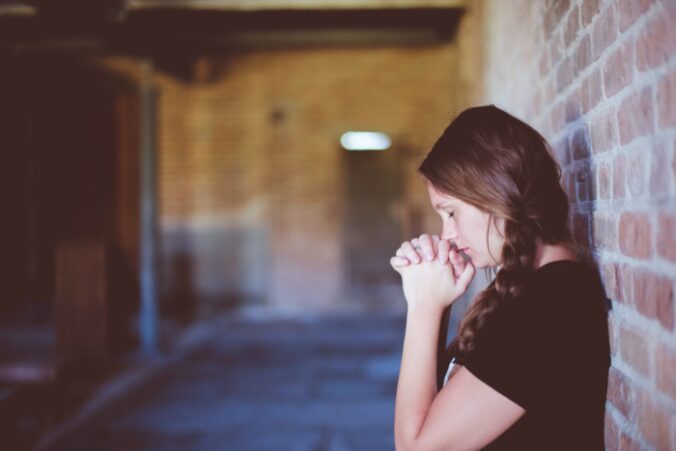
The well-being of young adults aged 18-25 in America has significantly declined, compared to older age groups, according to new research from the Human Flourishing Programme at Harvard University. This is due to the lockdowns but also to a decline in religious practice. The same phenomenon has occurred in Ireland.
The study used data from a nationally representative sample of US adults to examine well-being scores by age group across numerous domains such as happiness, health, relationships, financial stability, etc.
Data were collected in January 2022, after almost two years of the Covid pandemic.
It emerged that well-being improves with age. In other words, the younger age groups tend to have worse mental health.
Similar research conducted about 20 years ago revealed instead that happiness and life satisfaction were higher among young adults than in the middle-aged cohort.
Commenting on the results, Jenet Erickson a Senior Fellow of the Institute for Family Studies, speculates that decline in mental health among young people is connected with the decline in religious practice among that age group and an overarching sense of meaning and purpose.
The positive contribution of religious practice to mental health and well-being has been shown in numerous studies. (The Iona Institute has also produced a paper authored by Prof. Patricia Casey on this topic.)
Other research from the Human Flourishing Programme found that, compared to adolescents and young adults who never attend religious services, those who practice at least once a week have “greater life satisfaction and positive affect, greater volunteering, greater sense of mission, more forgiveness, and lower probabilities of drug use and early sexual initiation” They also have “fewer depressive symptoms and lower probabilities of probable posttraumatic stress disorder, cigarette smoking, prescription drug misuse, history of STIs”.
Similar results were found in those who pray or meditate regularly.
Jenet Erickson, from the Institute for Family Studies, notes that religion shapes young people through the families in which they grew up and the religious practices of the parents is the strongest influences on the devotional behaviour of their children.
The passage of faith from one to the next generation is weakening. The decline of religious practice, which is a common occurrence in the Western world, has inevitable long-term consequences on the mental health of the younger generations.
But its ill effects have been amplified by the Covid pandemic when, in many countries, churches were closed and people could not to socialise.
The convergence of long-term religious decline and the short-term, but intense, Covid crisis explains why now we see young adults suffering more than others.
giovedì, ottobre 27, 2022
Persecution of Christians denuonced at UN Human Rights Council meeting
The persecution of Christians in the world has been denounced at the meeting of the UN Human Rights Council.
The European Centre for Law and Justice (ECLJ) has presented some examples from Pakistan, India and Afghanistan during the 51th session of the Human Right Council that took place in Geneva at the beginning of October.In Pakistan, Christians are often accused of blasphemy and attacked by Muslim mobs. “Every year, about 40-50 cases of blasphemy are registered, and the courts continue to make unjust decisions due to increasing social pressure from Islamists.”, said ECLJ research fellow, Louis-Marie Bonnea.
Allegations of blasphemy, which could lead to the death penalty, are often spurious.
The ECLJ representative called the Pakistani government to stop the abuse of blasphemy laws and to punish the violent attackers.
In India, Christians are persecuted by Hindu extremists and also by the Government. “Police frequently arrest Christians under false charges disguised as fraudulent or forcible conversion. The charges arise from the misuse of anti-conversion laws, which have been established to ensure that people from lower castes, most of whom are Christians, remain socially and economically low.”, the ECLJ told to the UN Human Rights Commission.
In Afghanistan, after the Taliban took back control of the country, Christians and other religious groups are at extreme risk. “Under the Taliban’s rule, converting from Islam to Christianity is against the law and punishable by death. The Taliban has been utilizing tactics to uncover Christians by confiscating suspected Christians’ phones and looking through messages and contacts. The Taliban has even used direct correspondence and social media to deliver threats of imprisonment and execution to every Christian in Afghanistan”, denounced Jordan Sekulow on behalf of the ECLJ.
The European Centre for Law and Justice has also published a report on the challenges faced by ex-Muslims who convert to Christianity in Europe. The publication is based on direct interviews and highlights how, even if there are no laws banning conversions in Europe, Muslims converts still face exclusion and also violent assault from their former communities.
venerdì, ottobre 21, 2022
HSE pushes for exclusion zones outside abortion facilities
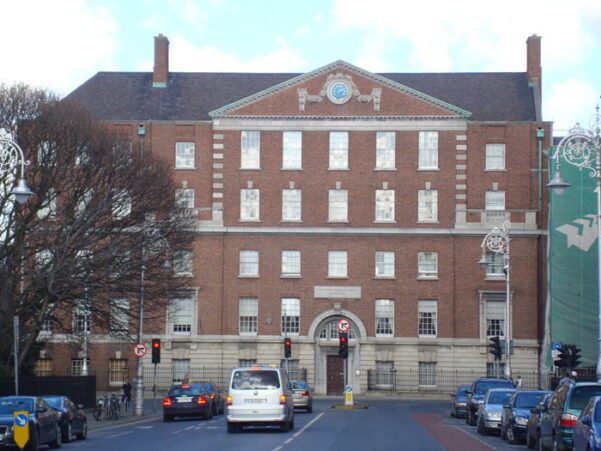
Last August, the Government published a General Scheme of a Bill that would ban pro-life activities, including silent prayers, from within 100 metres of hospitals and GP surgeries. The General Scheme is now under the legislative scrutiny of the Health Committee, before being presented to the Oireachtas.
In a submission to the Health Committee, the HSE has strongly supported such legislation, claiming that “It is hugely distressing for staff and personnel, who have committed to providing a safe, high-quality termination of pregnancy service to be exposed to intimidation whilst going about their work. Access to abortion care will remain vulnerable in an environment where providers are threatened, harassed or subjected to intimidating behaviours.”
The General Scheme presented by the Government would establish a 100-metre radius around not only hospitals and GP that are currently offering abortions but also around all healthcare premises in the country, including those where abortion is not performed.
This would include silent prayer or holding a placard with a religious image, if they are perceived to be having the effect of influencing someone else.
This piece of legislation was promised after the abortion referendum of 2018 but it has been delayed because, as the then Taoiseach Leo Varadkar said, “we do enter a difficult space in a democracy when you decide that certain opinions can’t be held, certain types of protests can’t happen.”
sabato, ottobre 15, 2022
The happiness gap between conservatives and liberals
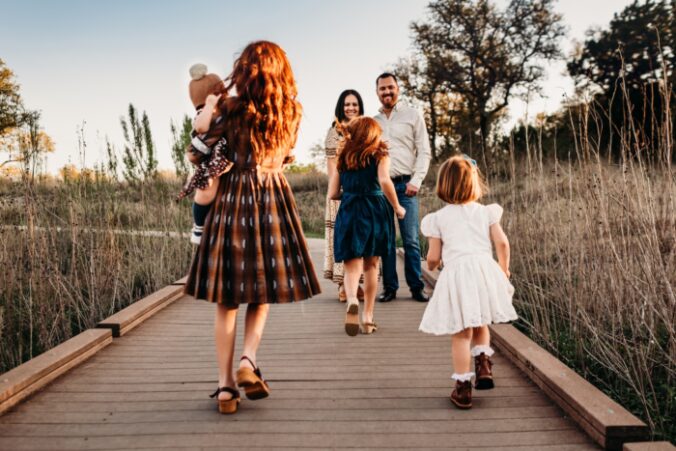
Conservative women are generally happier than their liberal counterparts, according to a new survey, and marriage and family life are strongly linked to the greater life satisfaction of conservatives.
The American Family Survey, an annual nationwide study of 3,000 Americans, found that only 15pc of liberal women of the 18-55 age group are “completely satisfied” with their lives and with their mental health. But among conservative women 31pc are “completely satisfied” with their lives and 36pc with their mental health.
Conservative men also report greater happiness levels.
Why does this ‘happiness gap’ exist?
Bradford Wilcox, Professor of Sociology and Director of the National Marriage Project at the University of Virginia, maintains that there are two main factors that explain the difference, namely marital status and family satisfaction.
Conservatives in the 18-55 age group are 20pc more likely to be married and 18pc more likely to be satisfied with their families.
The ideological gap between conservative and liberal women is even wider with regard to family life happiness. Sixty-one percent of conservative women reported complete satisfaction with their families, compared to 36pc of liberal women. The survey recorded an astonishing distance between the two cohorts that should make us reflect.
Contrary to what we often hear, and to what liberal women tend to believe, it is not independence, freedom and work that fulfil our existence, says Wilcox. Being in a family is more gratifying overall, even if the modern narrative says the opposite (namely, the more freedom and the fewer ties, the more happiness).
“The secret to happiness, for most men and women, involves marriage and a life based around the family”, comments Wilcox.
martedì, ottobre 11, 2022
A partial victory for the right to life in European court
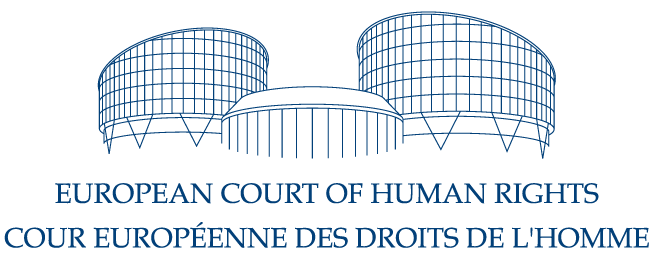
The ruling refers to Godelieva de Troyer, a woman who had suffered from chronic depression for more than 20 years. When her psychiatrist expressed doubts that she met the condition for euthanasia, she approached another doctor who strongly advocates for “assisted dying” for this kind of non-physical reason, and received the lethal injection.
This happened without the lady’s son being informed and after she “donated” 2,500 euro to the organisation that authorised the injection.
The Court also ruled that the Belgium euthanasia law is not contrary to Article 2, while at the same time reiterating that there is no “right to die” in the Convention. This means that countries that are signatories to the Convention can legislate to allow for euthanasia and assisted suicide, if they wish, but they have no obligation.
Only one of the seven judges, in a partly dissenting opinion, overtly stated that euthanasia is against the Convention, saying: “the purpose of euthanasia is to end life, whereas the purpose of Article 2 is to preserve and protect it. I humbly submit, on the contrary, that any form of euthanasia…would not only lack a legal basis under the Convention, but would also be contrary to the right to life.”
Another judged criticised the Belgian legislation, noting that “In patients with mental illness, a loss of autonomy may occur: a tendency to isolation and suicide may also be observed. One of the rules to follow in psychiatry is precisely to avoid leaving such patients alone.”
This remark is particularly relevant to another Belgian case that has emerged this week. Shanti De Corte, a 23 year old woman who suffered from severe depression and post-traumatic stress disorder, was recently euthanised on purely psychological grounds.
Six years ago, Shanti De Corte was at Brussels airport when a terrorist attack claimed 32 lives, including some of her schoolmates, and injured more than 300. Following the accident, she experienced constant panic attacks and became suicidal.
She finally received the lethal injection in May this year for “unbearable psychiatric suffering”, but some doctors believe that she was not offered all the possible treatments and now prosecutors have began an investigation on this case.
Shanti De Corte was physically healthy. Her case is indicative of how weak the safeguards are in the Belgian legislation and how easily euthanasia is now offered as a “solution” for psychiatric issues.
Last month Pope Francis, travelling back from Kazakhstan, commented on the ethical decline of the West and mentioned euthanasia. “Killing is not human, period. If you kill with motivation, eventually you will kill more and more. Let’s leave killing to the beasts“, he said.
The cases of these two Belgian women prove the Pope’s words. Once we accept that killing is a solution to end suffering, no safeguard will restrain the temptation to offer the “lethal solution” to more and more people who suffer from mental health and need instead proper treatments.
giovedì, ottobre 06, 2022
Je legaler die Euthanasie, desto mehr Menschen werden ohne Grund getötet
Nach dem offiziellen Bericht des kanadischen Gesundheitsministeriums starben im Jahr 2021 mehr als 10.000 Bürger in diesem Land durch Euthanasie. Zehnmal mehr als vor fünf Jahren.
Die Zahl ist in nur einem Jahr um 32 % gestiegen, was bestätigt, dass Euthanasie und die so genannte “Sterbehilfe”, sobald sie einmal eingeführt sind, zu einer akzeptierten gesellschaftlichen Norm, ja fast zu einer Pflicht für diejenigen werden, die leiden oder ihren Lebenswillen verloren haben.
Dem Bericht zufolge sahen sich 36 % der im letzten Jahr eingeschläferten Personen als Belastung für Familie und Freunde, während über 1 700 unter Isolation und Einsamkeit litten. Das heißt, sie sind eher durch soziale und psychologische Ursachen motiviert als durch Krankheit. So wie in den letzten Tagen leider und mit großem Erfolg der französische Regisseur Jean-Luc Godard (1930-2022).
Die Einzelheiten des vom kanadischen Ministerium veröffentlichten Dokuments sind ebenfalls aufschlussreich: Sie zeigen, was in jedem anderen Land passieren könnte, wenn bestimmte Praktiken legalisiert würden.
Kanada hat 2016 die Euthanasie und den “assistierten Suizid” eingeführt. Ursprünglich war der Zugang auf unheilbar Kranke beschränkt, aber 2019 erklärte das Oberste Gericht von Quebec diese Beschränkung für verfassungswidrig, und infolgedessen weitete die Bundesregierung 2021 die euphemistisch als “medizinische Sterbehilfe” bezeichnete Maßnahme auf nicht unheilbar Kranke aus. Mit der Gesetzgebung von 2021 wurden auch einige Sicherheitsvorkehrungen abgeschafft, wie z. B. die zehntägige Wartezeit für die Beurteilung vor der Operation und die Verpflichtung, die Alternative der Palliativmedizin anzubieten. Ab dem nächsten Jahr wird sie den “guten Tod” auch auf Patienten ausdehnen, die nur an einer psychischen Krankheit leiden. Aber ein wirklich mitfühlendes Land sollte den Kranken und Einsamen mehr bieten als eine tödliche Injektion. Stattdessen wurden dem Bericht zufolge seit Einführung des Gesetzes im Jahr 2016 31.664 Menschen auf diese Weise getötet.
Diese Zahlen bedeuten im Vergleich zum Vorjahr (10.064) eine Verzehnfachung gegenüber 2016 (1.018) und machen 3,3 Prozent aller in Kanada im Jahr 2021 registrierten Todesfälle aus. Die Zahl variiert je nach geografischem Gebiet, aber in British Columbia wird inzwischen fast jeder zwanzigste Todesfall durch Euthanasie herbeigeführt.
Der gesetzlich erlaubte “assistierte Suizid” erfolgt durch die Selbstverabreichung von tödlichen Medikamenten, ist aber eine seltene Praxis: nur sieben Fälle im Jahr 2021. Fast alle Patienten werden stattdessen direkt von einem Arzt oder einer Krankenschwester getötet. Es handelt sich sowohl um Männer (52,3 %) als auch um Frauen, und das Durchschnittsalter beträgt 76,3 Jahre: 77 Jahre bei den Frauen und 75,6 Jahre bei den Männern.
Die Ausweitung der Sterbehilfe auf nicht todkranke Menschen im Rahmen des Gesetzes von 2021 erlaubt sie, wenn die Betroffenen an einer als “unheilbar” definierten Krankheit leiden oder wenn sie behindert sind und nicht nur körperlich, sondern auch psychisch leiden. 219 Menschen, die im vergangenen Jahr eingeschläfert wurden, waren nicht unheilbar krank. Da dies erst seit Juni dieses Jahres möglich ist, beziehen sich die Daten in dem Bericht nur auf ein Halbjahr, und es ist daher leicht abzusehen, dass sich die Fälle mindestens verdoppeln werden.
Das Durchschnittsalter der Patienten, die keine Sterbehilfe in Anspruch genommen haben, liegt bei 70,1 Jahren und ist damit mehr als sechs Jahre jünger als das Durchschnittsalter der Patienten im Endstadium. Von diesen Todesfällen betrafen 37 % Personen im Alter zwischen 18 und 64 Jahren, während die Zahl der unheilbar kranken Menschen mit weniger als der Hälfte (16,7 %) deutlich geringer ist. Das heißt, je mehr die Euthanasie liberalisiert wird, desto jünger werden die Opfer.
Die häufigste Ursache des Leidens, sowohl bei Patienten im Endstadium als auch bei Patienten ohne Endstadium, ist der Verlust der Fähigkeit, sinnvollen Tätigkeiten nachzugehen (86,3 %). Mehr als 3 500 von ihnen gaben an, dass sie sich durch Familie, Freunde oder Betreuer belastet fühlten, und (wie erwähnt) mehr als 1 700 litten unter Einsamkeit und Isolation.
Nur 4 % der Anträge auf Sterbehilfe wurden abgelehnt, weil sie die erforderlichen Kriterien nicht erfüllten, während etwa 2 % derjenigen, die zunächst um Sterbehilfe baten, es sich später anders überlegten oder einfach früher eines natürlichen Todes starben.
Die häufigste Krankheit bei den unheilbar Kranken ist Krebs (65,6 %), während bei den nicht unheilbar Kranken neurologische Krankheiten wie Demenz oder Alzheimer im Vordergrund stehen. Die Erfahrung Kanadas, auch wenn sie nur kurz ist, bestätigt, dass nach der Einführung der Euthanasie oder des “assistierten Suizids” die anfänglich gesetzten Grenzen allmählich aufgehoben werden, die Zahl der Opfer ansteigt und eine Umkehr nur schwer möglich ist. Dasselbe geschah in Belgien und den Niederlanden.
